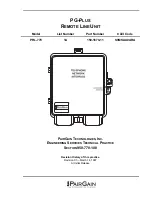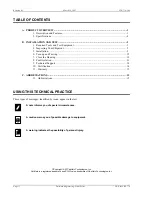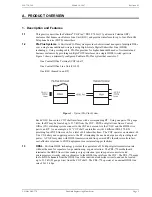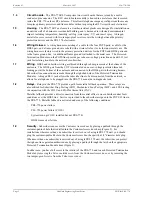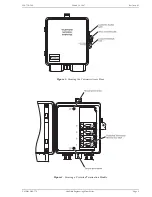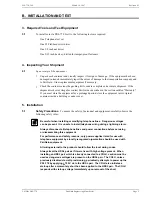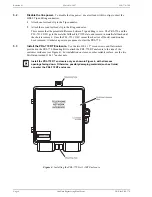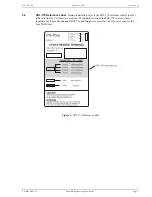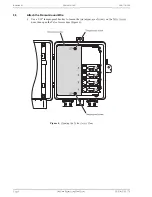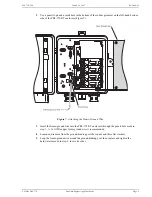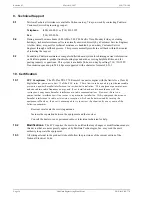
Revision 01
March 14, 1997
950-770-100
Page 2
PairGain Engineering-Plant Series
PG-Plus PRL-770
1.4
Circuit boards.
The PRL-770 RLU comprises two circuit boards that are joined by a multi-
conductor pin connector. The RLU circuit-board assembly is housed in a metal case that is secured
inside the PRL-770 outdoor RT enclosure. This allows telephone company craftspersons the means
to replace primary protectors and line modules without exposing the RLU circuit-board electronics.
1.5
Housing.
The PRL-770 RT enclosure is a weather-resistant plastic case designed for installation on
an outside wall of a business or residential building, and is hardened to withstand environmental
impact, including temperature, humidity, salt fog, water spray, UV, and insect spray. A hinged,
metal telco cover secured with two tamper-proof screws covers the wiring between the primary
protection devices and the PRL-770 electronics.
1.6
Wiring Harness.
A wiring harness consisting of a cable for the four POTS pairs, a cable for the
HDSL pair, and a frame ground wire is held with a strain relief as it exits the inner metal case. The
wiring harness is factory wired to the primary protection devices for the POTS and HDSL pairs and
to the frame ground bus. An additional frame ground is attached to the metal case. The Protected
Termination Modules on the POTS lines provide gas tube over-voltage protection and an RJ-11 test
jack for isolating trouble to the network or subscriber.
1.7
Wiring.
HDSL and subscriber wiring are threaded through rubber grommets at the bottom of the
enclosure. The HDSL pair from the COT is terminated on an over-voltage-protected threaded
binding post at the bottom of the enclosure and connected to the HDSL pair in the wiring harness.
Subscriber line connections are made through the right-hand side of the Protected Termination
Modules. A hinged RJ-11 jack allows the subscriber line to be disconnected from the network, or
allows for a telephone to be plugged into the PRL-770 as an aide in diagnostic tests.
1.8
Relays.
Relays in the PRL-770 provide a path for metallic fallback operation. These relays are
also utilized for Subscriber Drop Testing (SDT), Mechanized Loop Testing (MLT), and 4TEL testing
in conjunction with the COLU and PG-Plus Alarm Unit (PAU).
Metallic fallback provides a direct connection from the central office to one subscriber under fault
conditions over the HDSL line. Service is provided to the subscriber assigned to the POTS #1 line in
the PRL-770. Metallic fallback is activated under any of the following conditions:
PRL-770 power failure
PLL-720 power failure (COLU)
System turn-up (COLU installed but not PRL-770)
HDSL transceiver failure
1.9
Security.
Subscribers can secure the Customer Access door by placing a padlock through the
customer-padlock hole that is drilled into the Customer Access door hasp (Figure 2). For
installations where more than one subscriber is serviced out of a single PRL-770 unit, you should
plug the customer-padlock hole in the Customer Access door hasp with a 3/8" diameter hole plug.
When more than one subscriber is serviced out of a single PRL-770 unit, the subscriber can protect
their phone line against unauthorized use by placing a padlock through the latch on the appropriate
Protected Termination Module door (Figure 3).
In either case, you have full access to the interior of the PRL-770 and to each Protected Termination
Module by removing the Telco override screw from the Customer Access door, or by removing the
two tamper-proof screws from the Telco Access door.
Summary of Contents for PRL-770
Page 18: ......

